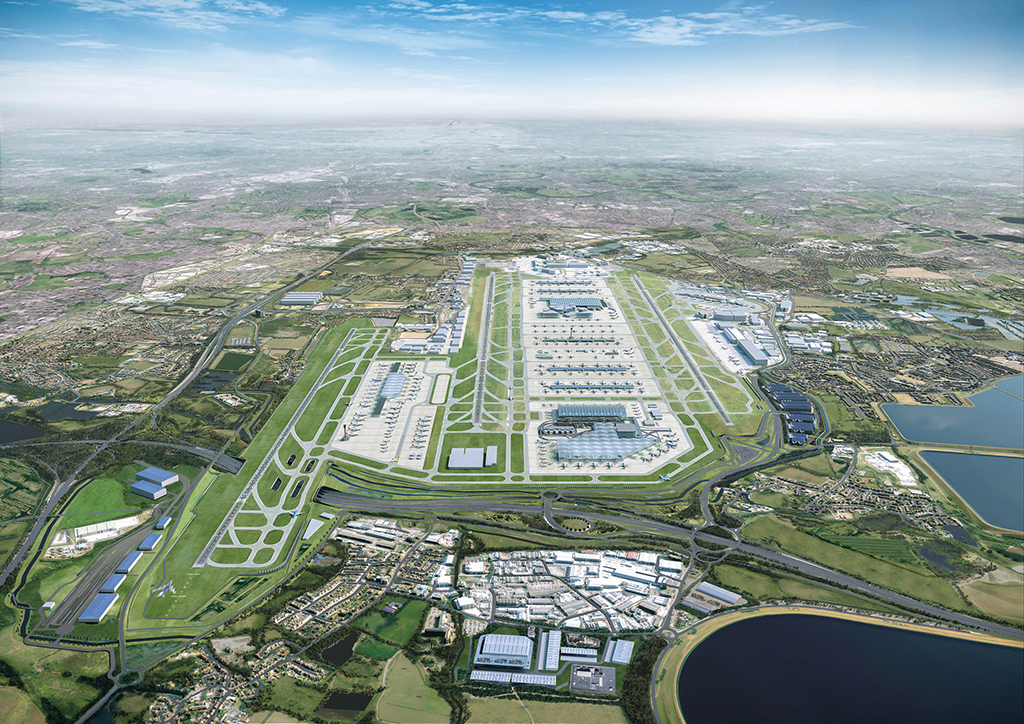
London Heathrow Airport has seen traffic increase nearly to pre-pandemic levels.
For years, it has been the never-ending question: Just how, when, or even if, London Heathrow Airport (LHR) would get the third runway that is desperately needed for it to grow, or even maintain current levels of capacity?
LHR, the UK’s sole hub airport, had been severely capacity-constrained for years. The west London site has typically operated at 99% capacity, meaning even slight disruptions in the flow of traffic can mean hours, even days, of knock-on delays.
Until three years ago, it appeared that a solution was finally in sight. After decades of prevarication by both Conservative and Labour governments, in 2015 a definitive airports commission, set up to investigate the issue, came down firmly in favor of creating a third runway northwest of the existing two east-west aligned landing strips.
The commission said the new runway would provide the capacity for around 40 new destinations from the airport, generate £147 billion ($230 billion at then-exchange rates) and create more than 70,000 jobs by 2050.
The price tag was huge at an estimated £14 billion. This covered not only the runway and its immediate surrounding infrastructure, but potentially rerouting London’s orbital motorway, which runs around the western edge of the airport, through a tunnel under the new runway, and razing the village of Sipson outside the airport’s current northern perimeter.

The proposed cost also attracted the ire of airlines, which accused Heathrow of “gold-plating” the project and raising fees.
The plan still had to face what would be inevitable opposition in the courts from environmental groups, but progress seemed, at long last, to be apparent.
Then the pandemic arrived.
Heathrow, with its almost total reliance on international flights, was particularly badly hit. Traffic slumped and the immediate priority of dealing with COVID banished all thoughts of the third runway.
Traffic is now rapidly ramping up once again, with 2023 first-quarter passenger figures just 6% lower than for the same period in pre-pandemic 2019. Sooner rather than later, airlines will again start to run into capacity ceilings. But talk of a third runway has become distinctly muted.
Asked for its current position on the new runway, LHR issued a brief statement: “While we are now rebuilding capacity after the pandemic, we are also reviewing and looking ahead at the next steps for expansion.
“Heathrow expansion is critical for the UK’s future economic success. It will create jobs, boost Britain’s exports and drive competition and choice to lower airfares for passengers. What’s more, it will only be delivered within strict environmental limits.”
The airport’s outgoing CEO, John Holland-Kaye, has said that there will be further developments on the third runway later this year, without giving more details.
The UK’s Department for Transport (DfT), meanwhile, appears distinctly lukewarm over the planned runway. Its position is that LHR expansion “is a private sector project, which must meet strict criteria on air quality, noise and climate change, as well as being privately financed, affordable, and delivered in the best interest of consumers.”
The DfT says: “The government remains supportive of airport expansion where it can be delivered within our environmental obligations.”
Although the current transport secretary, Mark Harper, is supportive, that particular ministerial post changes hands with regularity, with no guarantee that the next occupant will follow his approach.
The impression given is that the Conservative administration is maintaining a distinctly arm’s-length stance from the whole affair.
This is unsurprising. There has been nervousness from successive UK governments about expanding airport capacity in the crowded southeast corner of the UK, where so-called NIMBY-ism, or not in my backyard, is rife.
Ever since proposals for a new four-runway airport centered around the appropriately named ex-RAF station of Wing, in rural Buckinghamshire, some 25 miles northwest of Heathrow, were howled down by enraged local inhabitants in 1971, governments have shied away from decisions that would antagonize communities.
Five decades of failing to grasp this nettle have left London and the UK short of the airport capacity it needs if it is to attain the government’s stated ambition of creating a “global Britain” free of the shackles of the European Union post-Brexit. London Gatwick (LGW) still has some capacity growth if its plans to bring its northern runway, currently used as a taxiway, into permanent use as a secondary runway come to fruition.
Heathrow’s third runway, on balance, still seems likely to go ahead.
Except …
The opposition Labour Party, which scored major gains in English local council elections in May and is tipped to win the next general election in 2025, is not in favor. The runway saga may yet have even more time to run.
